Post by Tira Gaston and Britta Harbury, undergraduates in Psychology and Interdisciplinary Neuroscience at Portland State University, and Bill Griesar. Tira and Britta have participated in multiple outreach visits through nwnoggin.org.
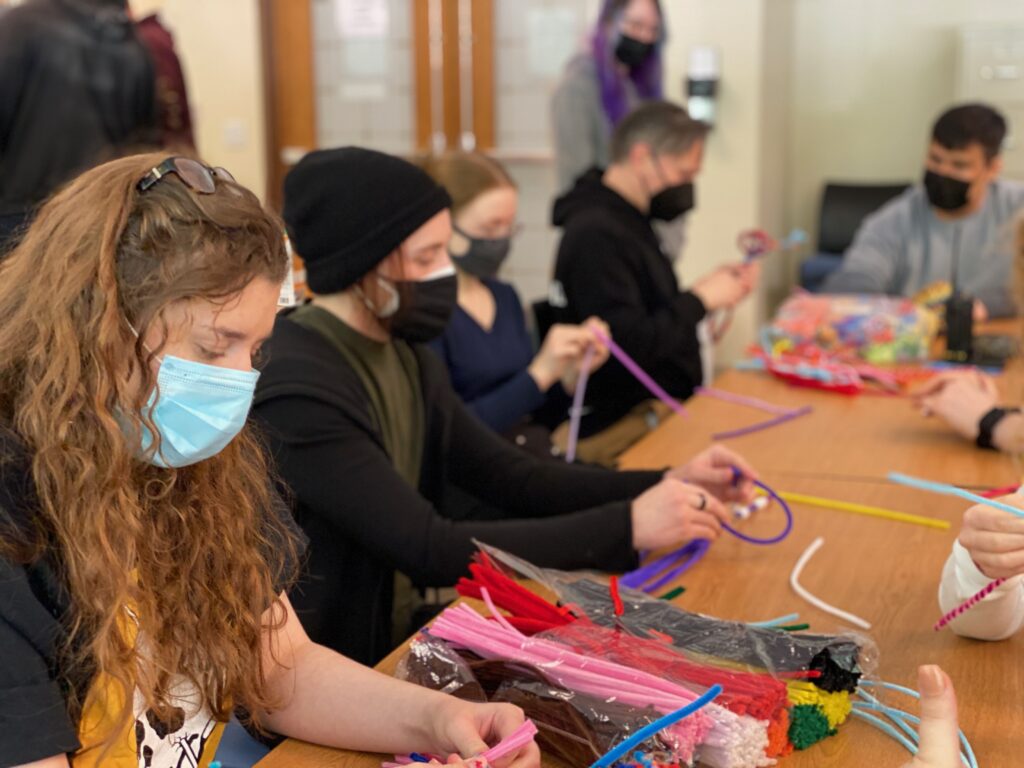
This week, NW Noggin returned to the amazing Bridges to Pathways Residential Drug and Alcohol Treatment Center in historic St. Helens, Oregon, about 30 miles west of Portland.
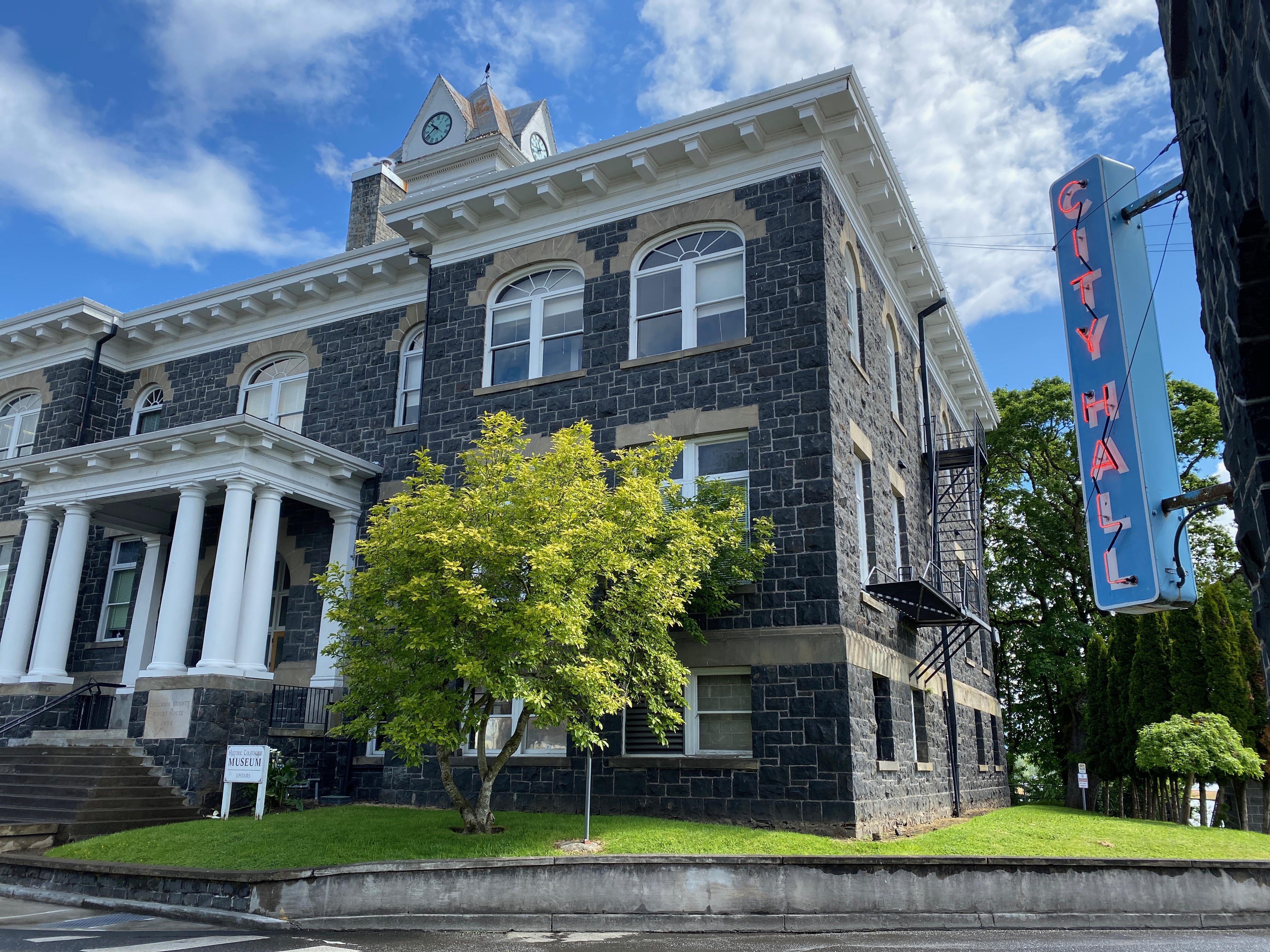
LEARN MORE: Pathways Under Change
We brought a large crowd of outreach volunteers, including Quinn Westlynd, Kristin Preston, Kira Rosen, Tonia Bautista, Anna Traylor, artist Lillian Chen, Kaya Burd, Tira Gaston, Britta Harbury, Jeff Leake, Bill Griesar and Ellie Phelps from PSU, and artist Sienna Cenere from Portland Community College and Sienna Art Studios.
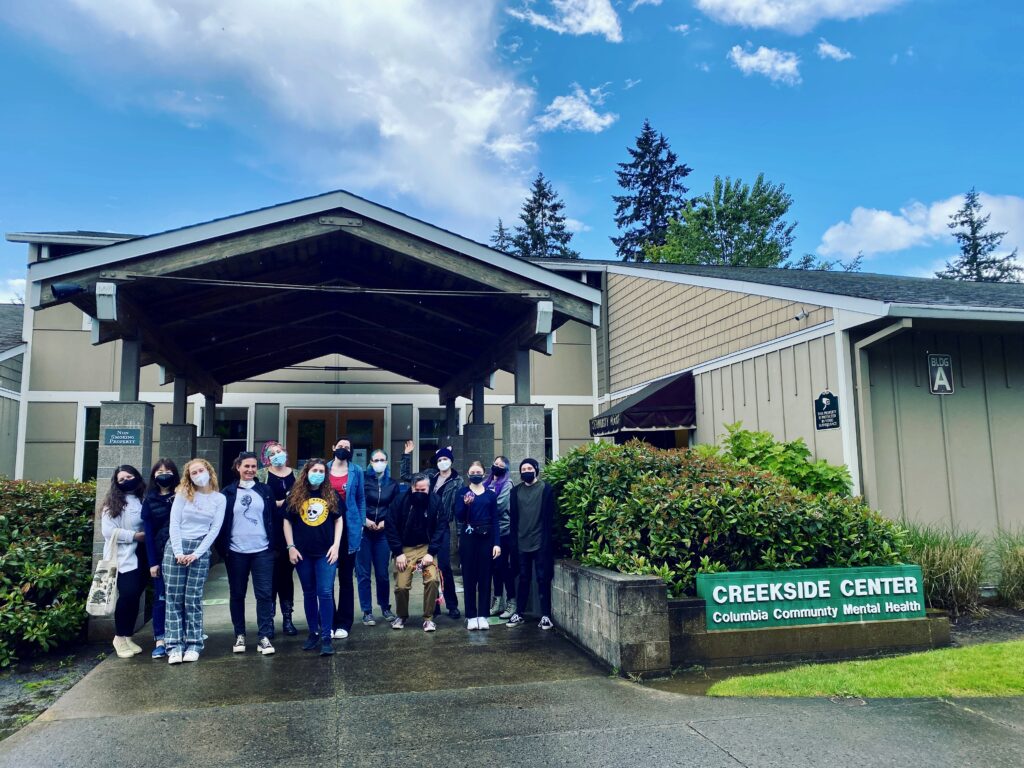
The residents we met at the Creekside Center were passionate to learn more about the brain and how to improve their own situations and community.
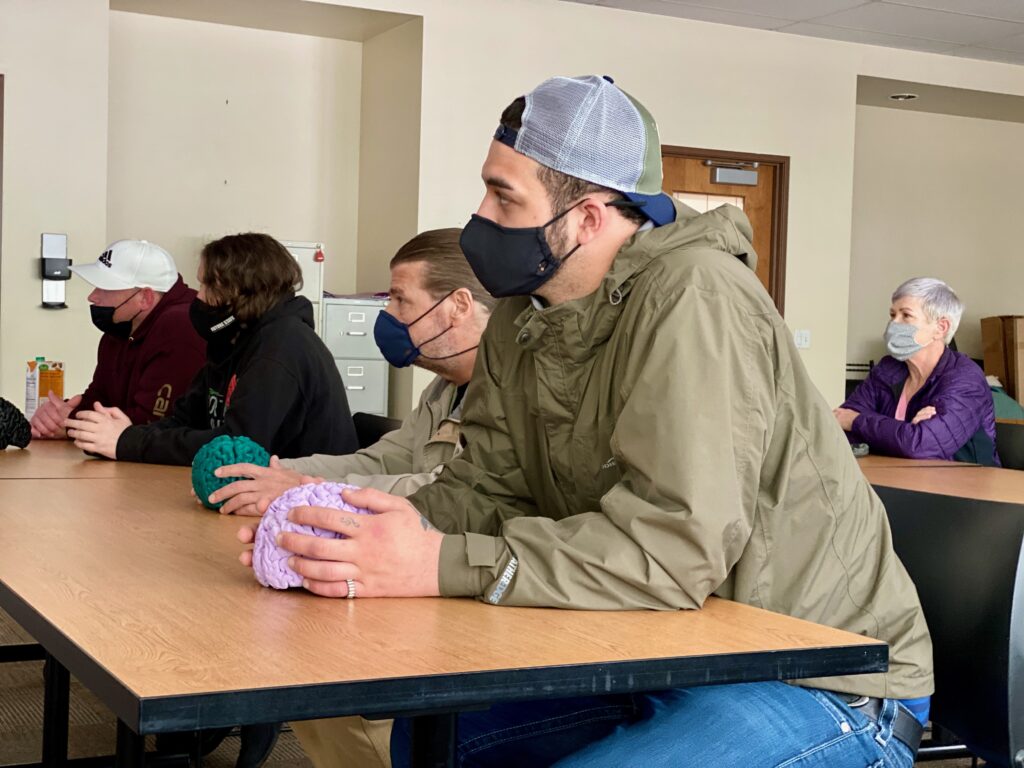
This desire for positive change was clear from their profound and thought-provoking questions including: how Tourette’s Syndrome influences the brain, why chronic alcohol use is especially dangerous, whether we can generate new brain cells, why breaking an addiction is so difficult, how the brain is impacted by drugs, and potential new treatments for individuals with drug and alcohol use disorders.
LEARN MORE: What is Tourette syndrome?
LEARN MORE: Dysfunctions of the basal ganglia-cerebellar-thalamo-cortical system in Tourettes
LEARN MORE: Tourette syndrome: a disorder of the social decision-making network
LEARN MORE: Neurobiology of Tourette Syndrome
Perhaps the most compelling and relevant question that was repeatedly brought up was “Is the brain permanently changed by drug use?”
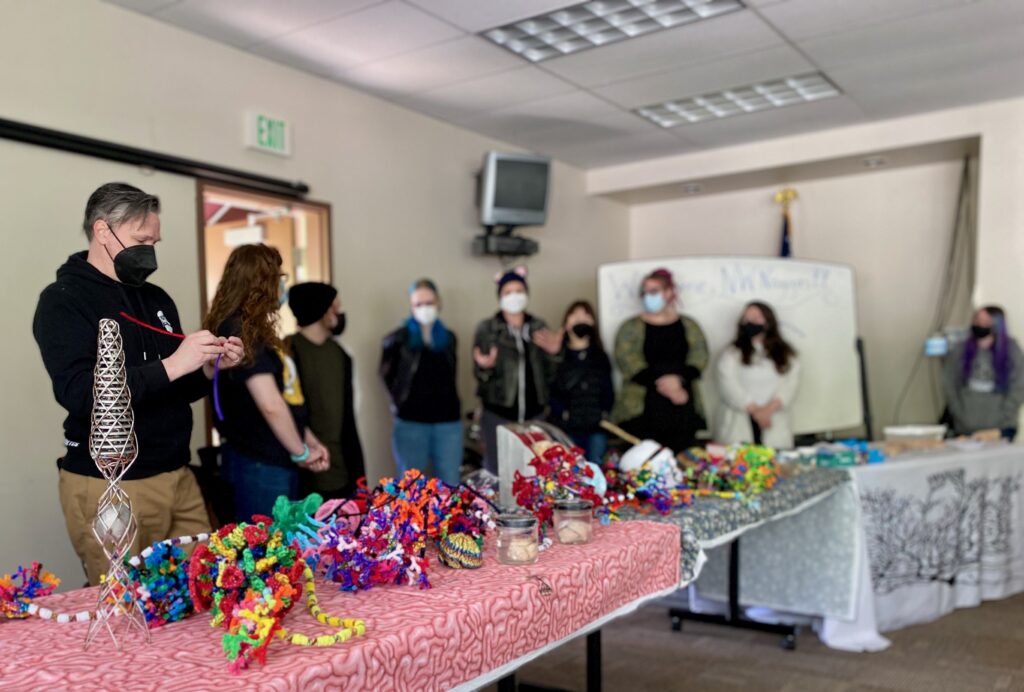
Is your brain permanently changed by drugs?
The “reward systems” of our brain release the neurotransmitter dopamine when we encounter something that promises some type of reward. We tend to get motivated, releasing the brakes on our behavior and taking action. Dopamine changes how our body is mapped in our brain (for example, in deep brain areas like the insular cortex), altering how we feel, and this contributes to that wonderful sense of anticipation, the drive to take the next step we predict will let us get what we’re after.
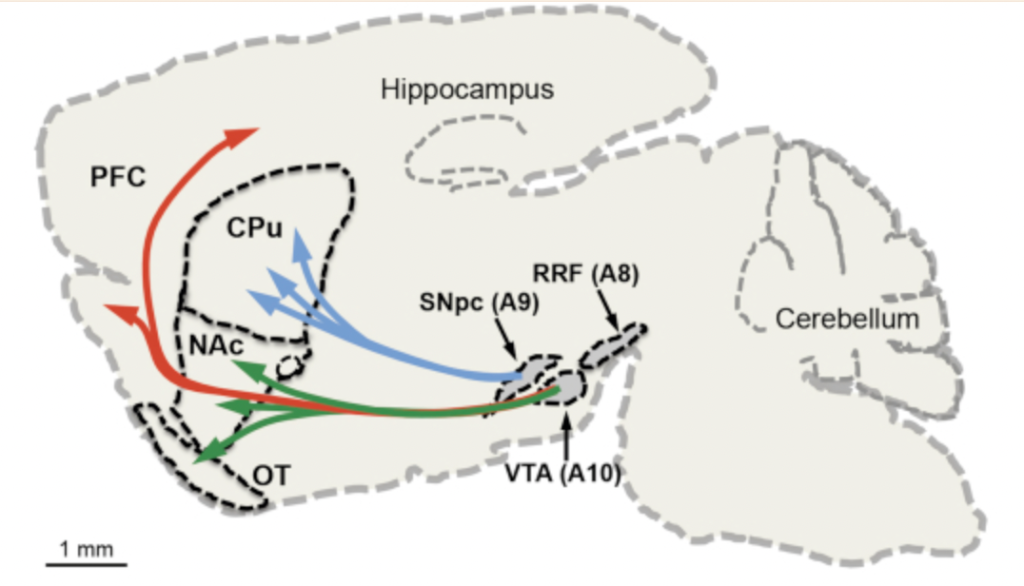
LEARN MORE: Dopaminergic Neurons and Brain Reward Pathways
LEARN MORE: The insula: an underestimated brain area
That sense of anticipation is often better than the reward itself!
Drugs (including alcohol), and the “stimuli” associated with drug taking (for example, a familiar bar, a needle, the ubiquitous Starbucks logo or a specific neighborhood) provoke the release of dopamine, but so do stimuli predicting actions required to join other rewarding activities. This could be meeting friends, preparing a meal for your family, helping others, accomplishing an important task, or figuring out who did it in a mystery series – or discovering how your brain is actually changed by drugs.
“Between stimulus and response there is a space. In that space is our power to choose our response.”
— Victor E. Frankl
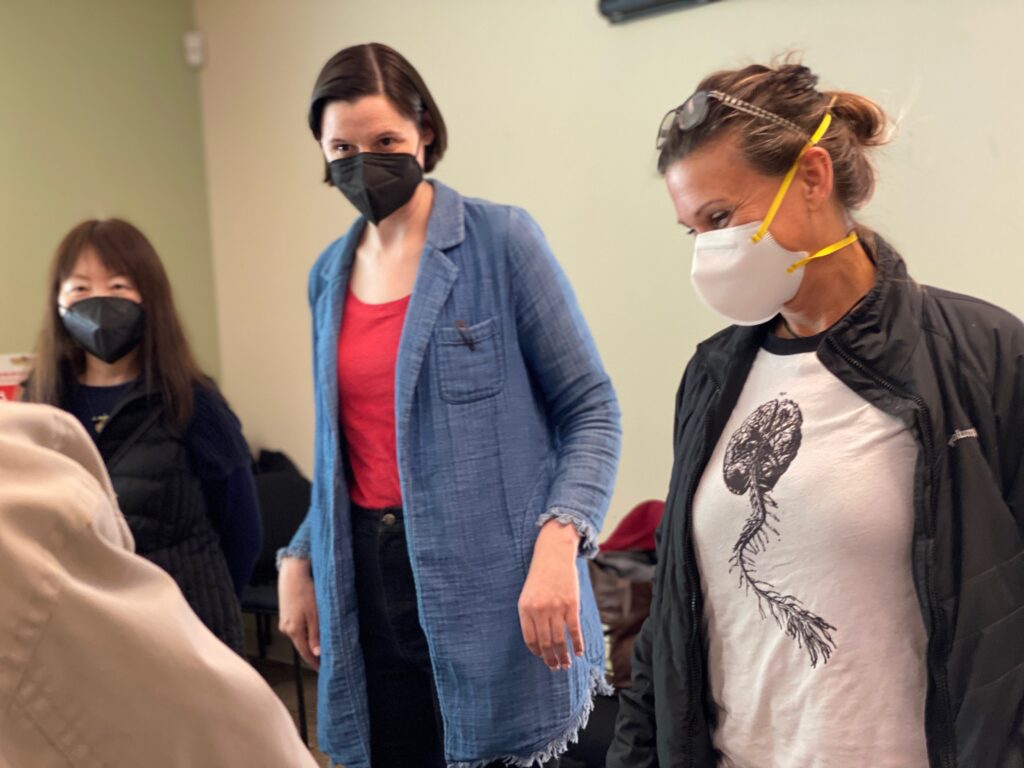
LEARN MORE: Power to Choose: Mindfulness & Addiction
When an individual routinely uses a drug, their brain and body change and it typically takes more and more substance to feel the same way. This is also known as tolerance, or hedonic adaptation. Our body will also begin to produce less dopamine and respond less to what we release or encounter, when these pathways are chronically overstimulated through drug use. That joyous sense of anticipation can ultimately be blunted not only for drugs, but for other rewarding activities, too.
Heavy drinking agitates your brain
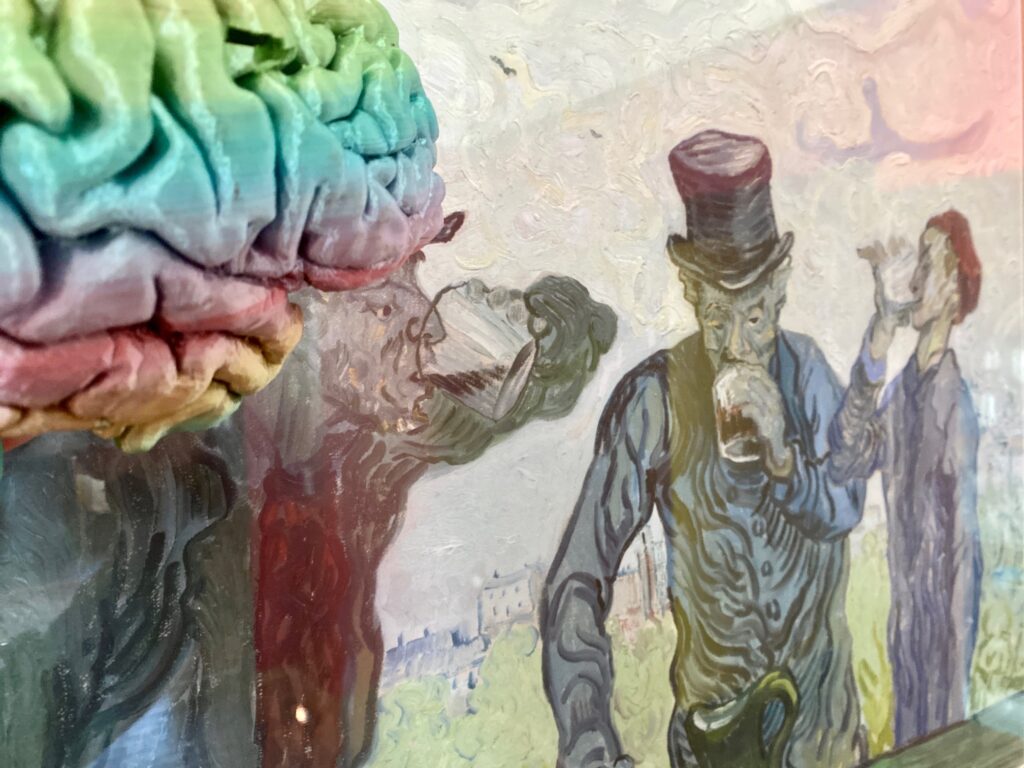
Alcohol (or ethanol) is a small molecule that easily gains access to the brain and body. It interacts with proteins embedded in neurons known as receptors, which “receive” chemical messages (like those from alcohol) and change their shape and function in response. Alcohol activates one type of receptor, known as GABA-A, which reduces neuron activity – and so a drink can quiet networks in our frontal lobes that normally consider social consequences and inhibit or constrain our behavior based on social context and expectations. We can relax a little, engage with others more freely and often enjoy a great evening!
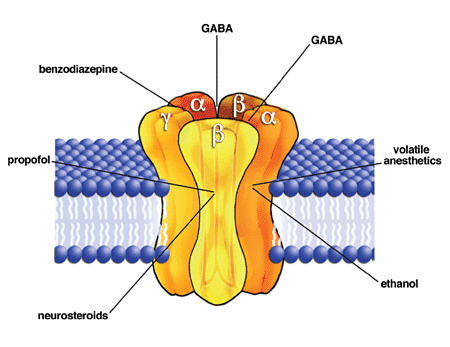
LEARN MORE: GABA-A receptors and alcohol
However too many drinks will slow neurons enough to cause a loss of coordination, and alcohol also blocks (or antagonizes) yet another receptor, known as Glutamate NMDA. GABA is the brain’s primary inhibitory neurotransmitter, while Glutamate, in contrast, gets our brain cells to fire. There are several receptors for Glutamate, but NMDA is specifically active at high levels of synaptic activity; that is, when there’s a lot going on at a synapse. When NMDA activates, it allows calcium inside our cells, initiating changes, including changes in gene expression, strengthening specific synapses and altering how neurons distribute information, thus creating memories for what’s occurred.
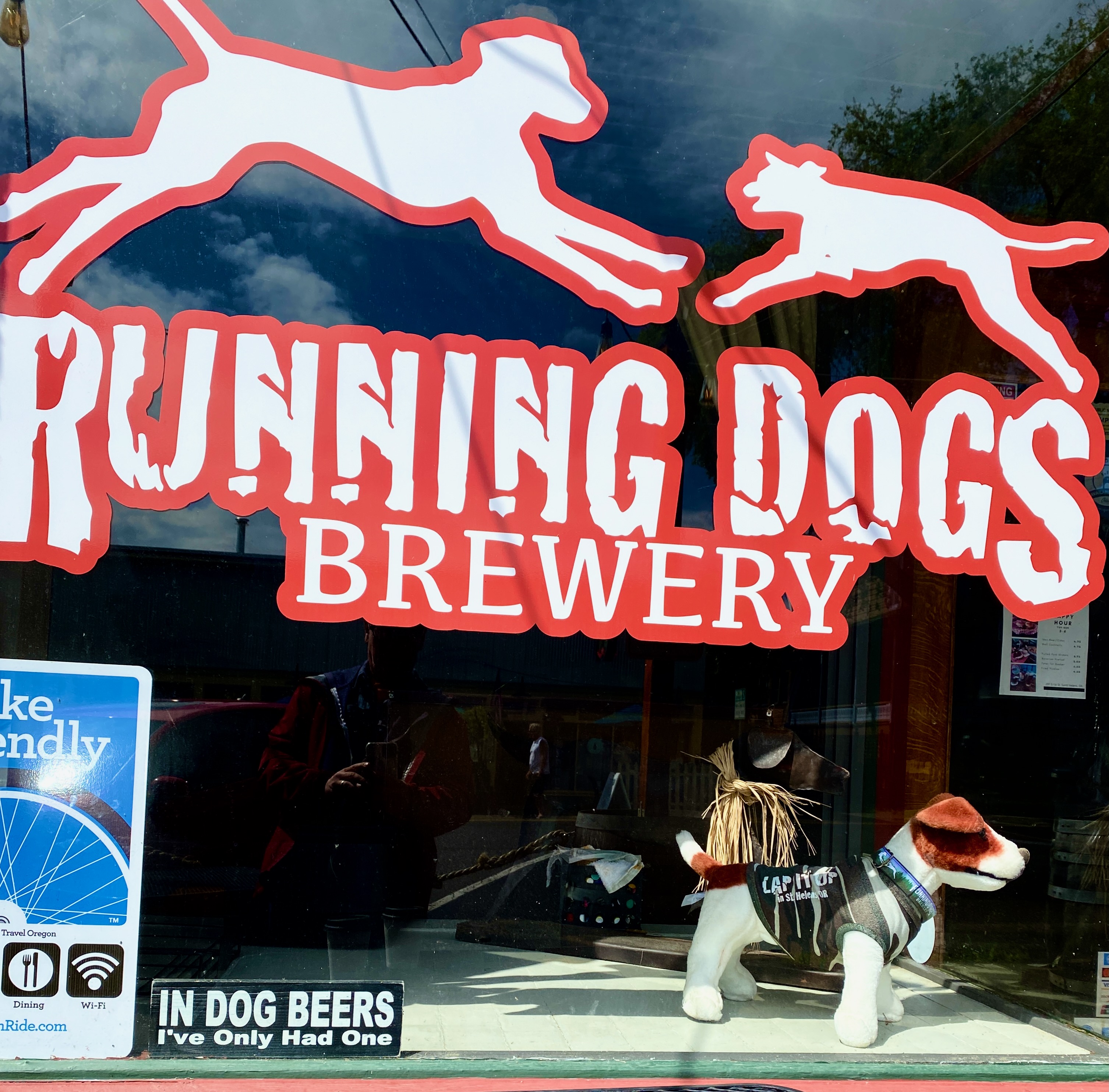
LEARN MORE: Alcohol and NMDA receptor: current research and future direction
Heavy drinking can lead to severe episodes of memory loss known as blackouts, but chronic alcohol also causes changes in the number and distribution of receptors. The brain loses GABA-A receptors, and the inhibitory neurotransmitter GABA, and becomes less able to calm itself. Those suffering from alcohol use disorder report agitation, anxiety, stress and pain without a drink (alcohol, a messy drug, also causes us to release our own opioids too!). There is a terrible risk of seizures – too much excitatory activity in the brain – during attempts at withdrawal.
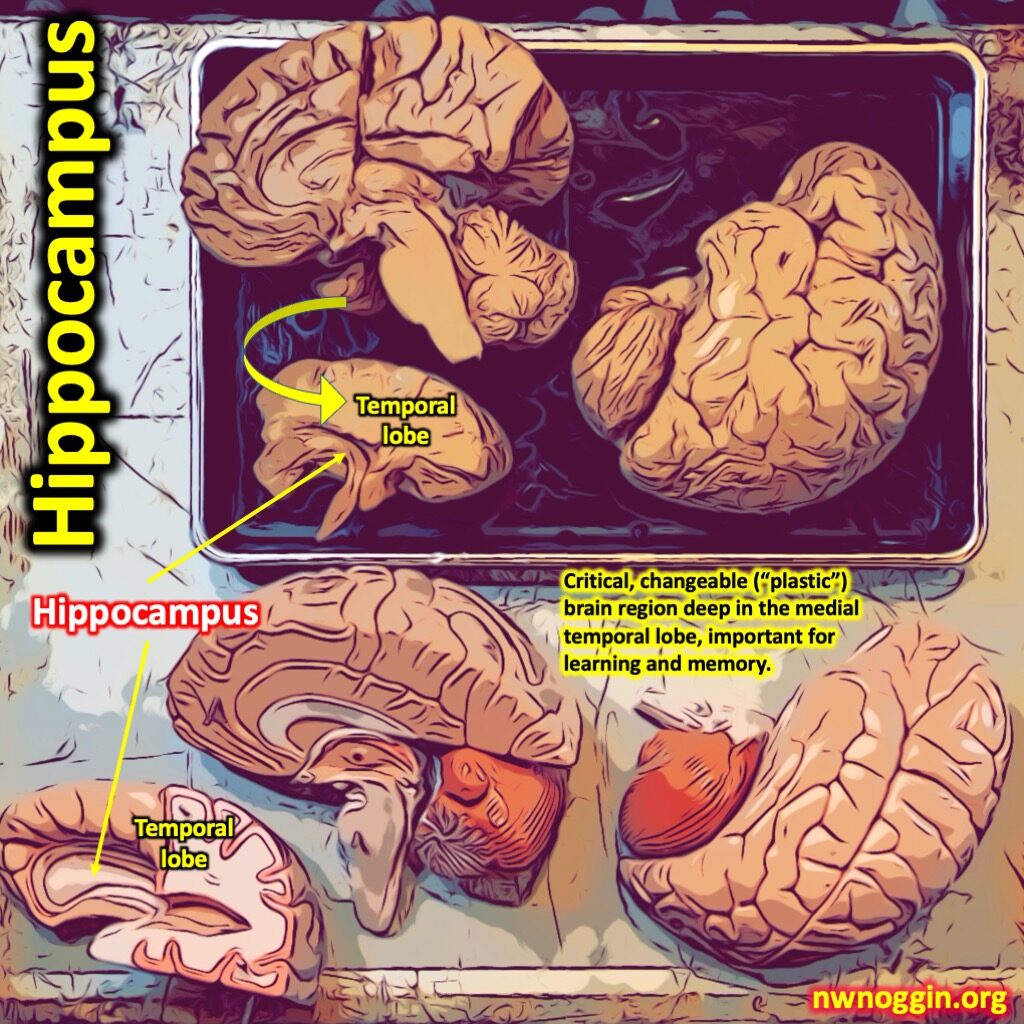
LEARN MORE: Alcohol-induced blackouts
LEARN MORE: The Role of GABAA Receptors in the Development of Alcoholism
LEARN MORE: Alcohol withdrawal syndrome: mechanisms, manifestations, and management
“What is brain shrinkage? How does alcohol shrink your brain?”
— Client at Bridges to Pathways
Chronic alcohol also leads to more Glutamate NMDA receptors. While heightened activity at Glutamate synapses can activate NMDA receptors and strengthen connections, too much stimulation (for example, during a seizure) can provoke neurons into committing cellular suicide (apoptosis). You can lose brain.
LEARN MORE: Alcohol Use Disorder (AUD)
LEARN MORE: Understanding Alcohol Use Disorder (NIAAA)
LEARN MORE: Alcohol’s Damaging Effects on the Brain (NIAAA)
LEARN MORE: Update on the Neurobiology of Alcohol Withdrawal Seizures
LEARN MORE: What’s a “drink..?” At the Newmark for beer & brains
Hope for recovery
Although the brain is altered through persistent drug use, there is tremendous hope!
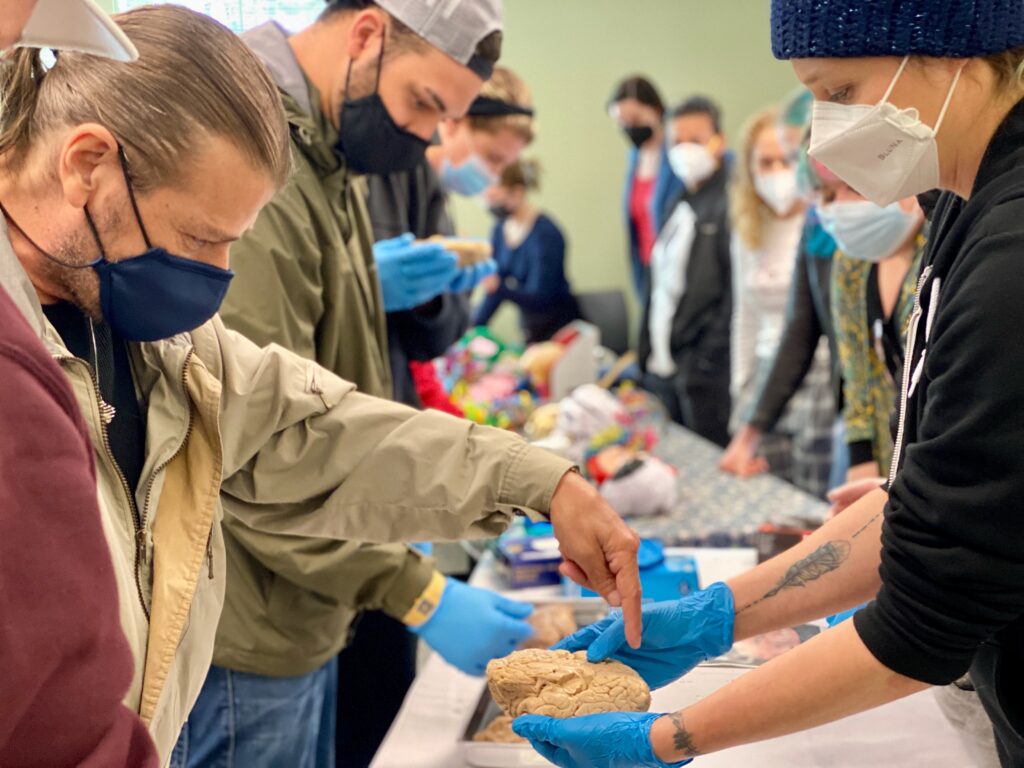
Stopping, or significantly reducing drug exposure also changes synaptic activity, leading to changes in receptor number and distribution. The brain does not forget drug use, but rather lots of new learning can occur. While reward pathways recover, the stimuli associated with drug taking often remain powerful triggers for motivated behavior. It helps to change your environment, and have other motivating experiences and activities to pursue, including a strong community network of friends.
“Most recovering alcoholics in early sobriety have trouble believing they’ll ever have fun again but if they hang in there, it’s amazing how good life can become.”
— Elizabeth Zelvin
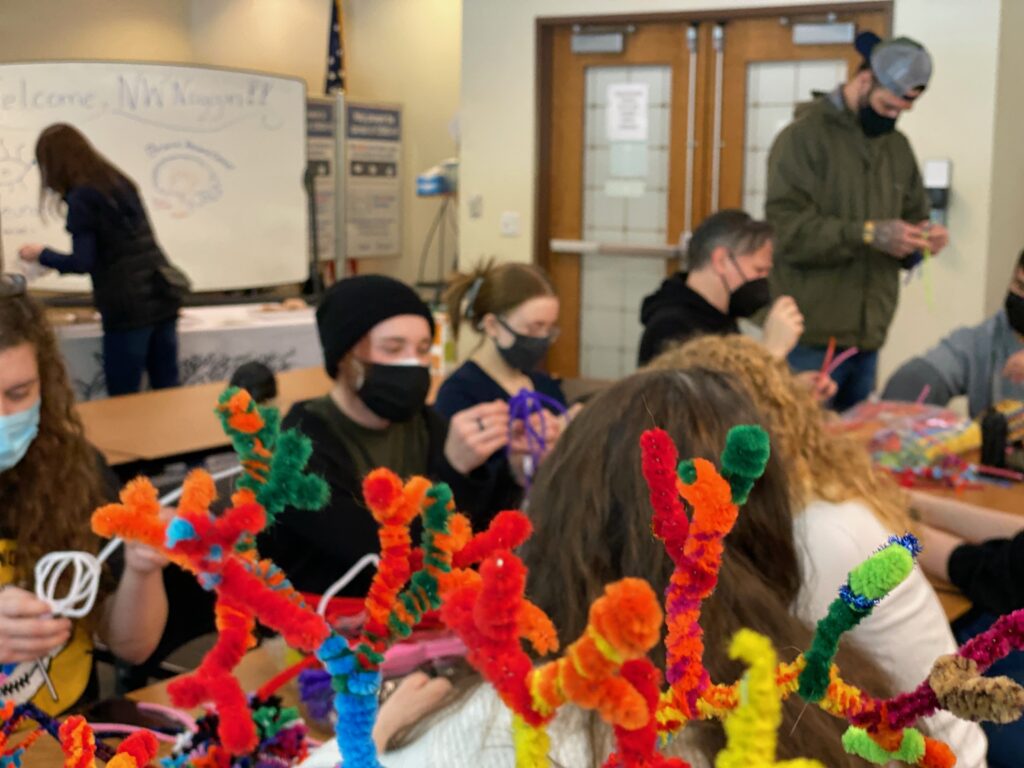
According to the National Institute on Drug Abuse (NIDA), drug and alcohol use disorder are definitely “…treatable. Research on the science of addiction and the treatment of substance use disorders has led to the development of research-based methods that help people to stop using drugs and resume productive lives, also known as being in recovery.”
LEARN MORE: Can addiction be treated successfully?
Meditation, mindfulness, forest bathing, making art, changing your environment and the support of others can strengthen positive habits and lessen the chance of relapse. That is why support groups and treatment centers like Bridges to Pathways are so important in rehabilitation from use disorders.

“The following brain structures increase in volume in response to (alcohol) abstinence: the entire cerebral cortex (Liu et al. 2000); temporal, insular, and anterior cingulate cortices (Cardenas et al. 2007); amygdala (Wrase et al. 2008) (a finding that would argue against a premorbid volume deficit); thalamus (Cardenas et al. 2007); hippocampus (Liu et al. 2000, Wrase et al. 2008); brainstem; and cerebellar cortex (Cardenas et al. 2007; Liu et al. 2000).”
— Alcohol’s Effects on the Brain (2017)
LEARN MORE: Principles of Effective Treatment
LEARN MORE: The Psychological and Physical Effects of Forests on Human Health
LEARN MORE: Bathing your brain
LEARN MORE: The Use of Art and Music Therapy in Substance Abuse Treatment Programs
From Britta Harbury, undergraduate at Portland State University
NW Noggin held an all-volunteer outreach event at Bridges to Pathways May 19th, 2022. The first half was a group discussion, followed by opportunities to craft pipe cleaner neurons and hold human brains. Much of the discussion understandably revolved around substance use. Once again, individuals living with these conditions had excellent questions and contributed invaluable personal experience. Clients requested more detailed explanations of concepts that had been briefly mentioned in therapy and doctor’s appointments. Neuroplasticity and neurogenesis were popular subjects. There were also several questions regarding specific disorders, including Tourette syndrome and Parkinson’s disease.
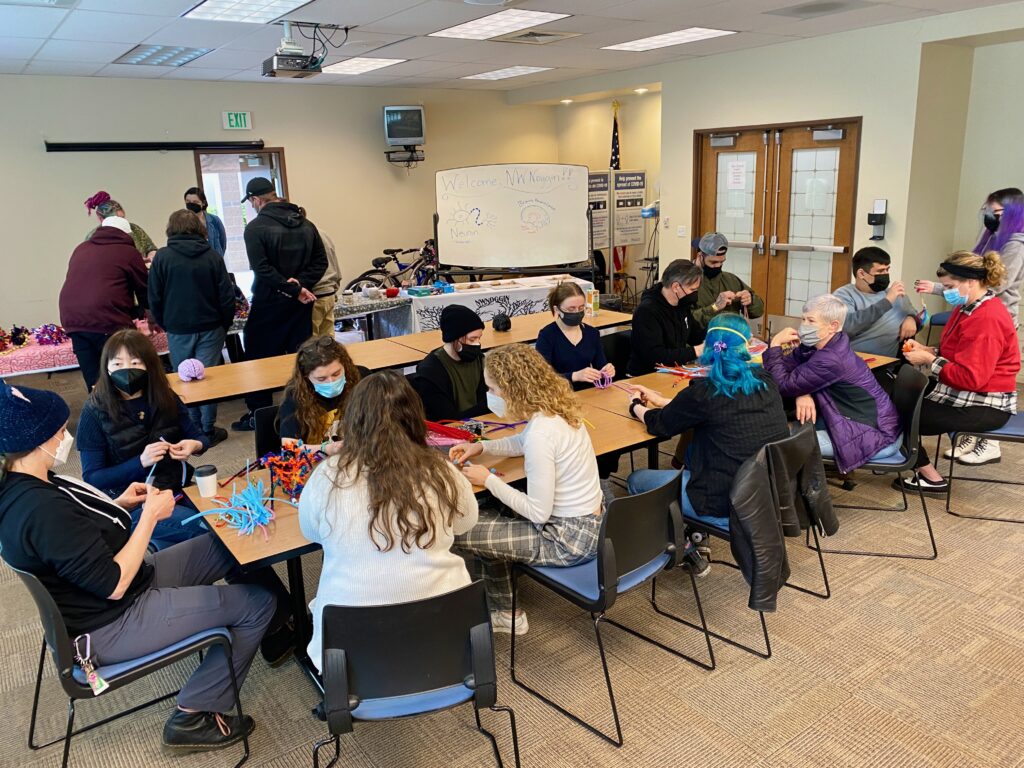
These questions present a consistent theme: the desire for more detailed information about neuroscience topics that directly affected them. Later personal conversations also followed this theme, with people often self-disclosing their diagnoses. As these discussions progressed, a sense of hope developed. For example, many clients entered the discussion believing that once neurons were destroyed the entire brain was lost forever. In reality, neuroplasticity and even neurogenesis suggest that there are ways for the brain to heal from damage caused by chronic substance use.
Brains and art
“You gotta be kind and share genuine research and information and often it all works out.”
—Ellie Phelps, PSU undergraduate who works with clients at Bridges to Pathways
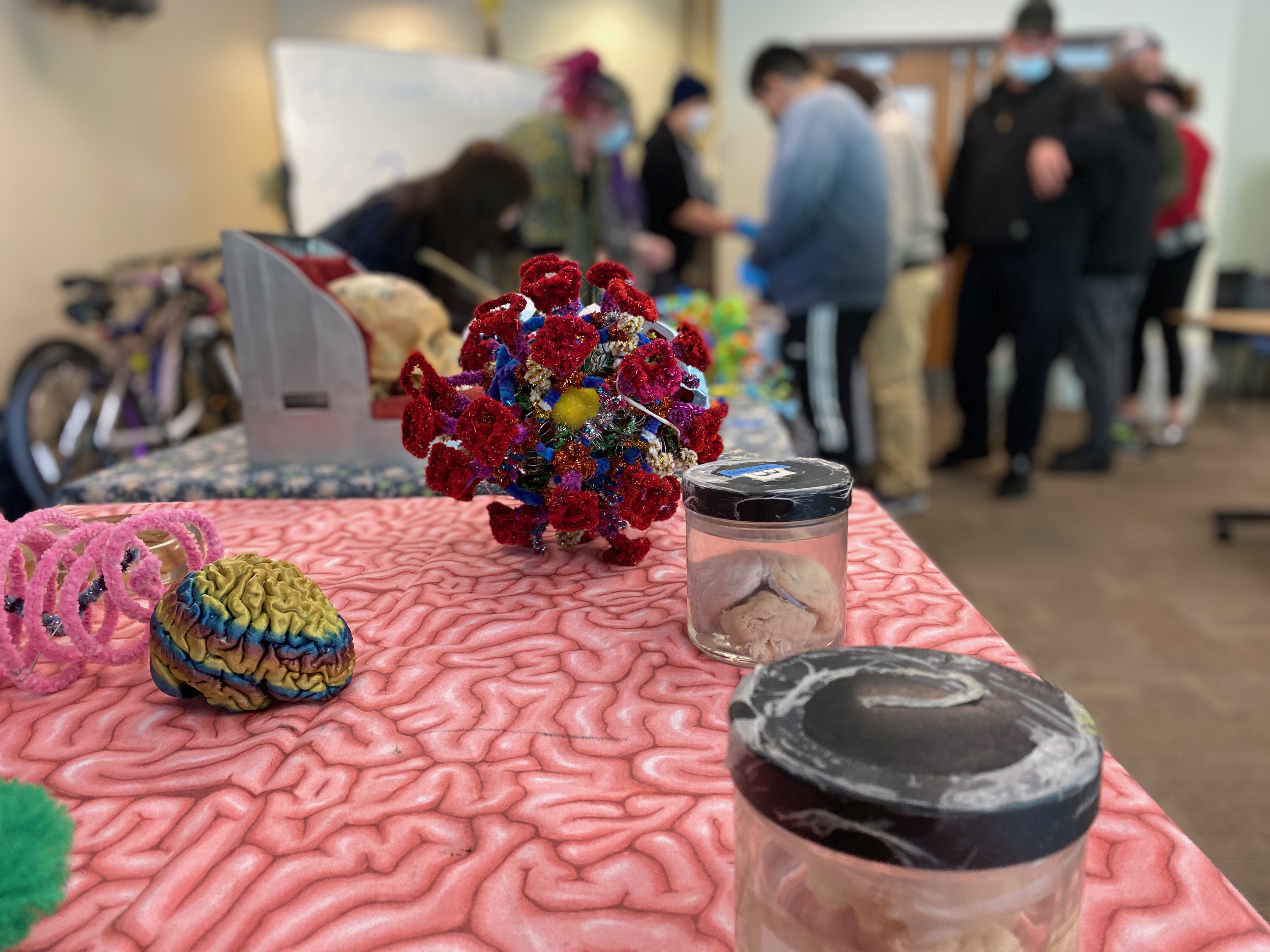
As a group, we Noggin volunteers showed residents how to build new brain cells from pipe cleaners. We talked one-on-one about the ways that neural networks of the brain are impacted by drugs and alcohol.
MAKE YOUR OWN BRAIN CELLS: NW Noggin STEAM Art Projects
Everyone had such incredible questions and were also fascinated to hold real brains!
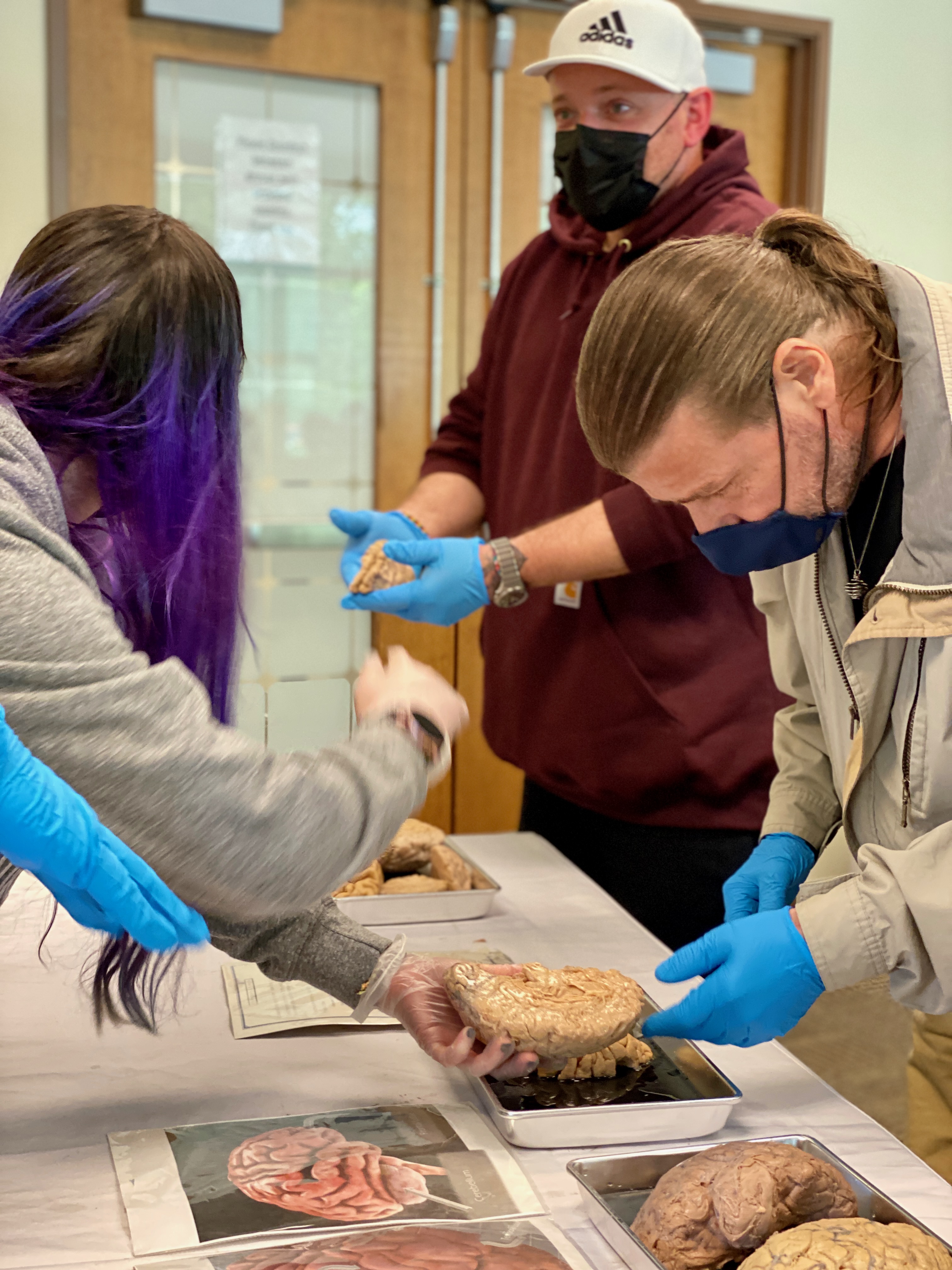
It was amazing to actually see the various parts of the brain and point out which parts are impacted by drug and alcohol use. It was palpably empowering for both residents and volunteers to be involved in such a meaningful and life-changing experience.
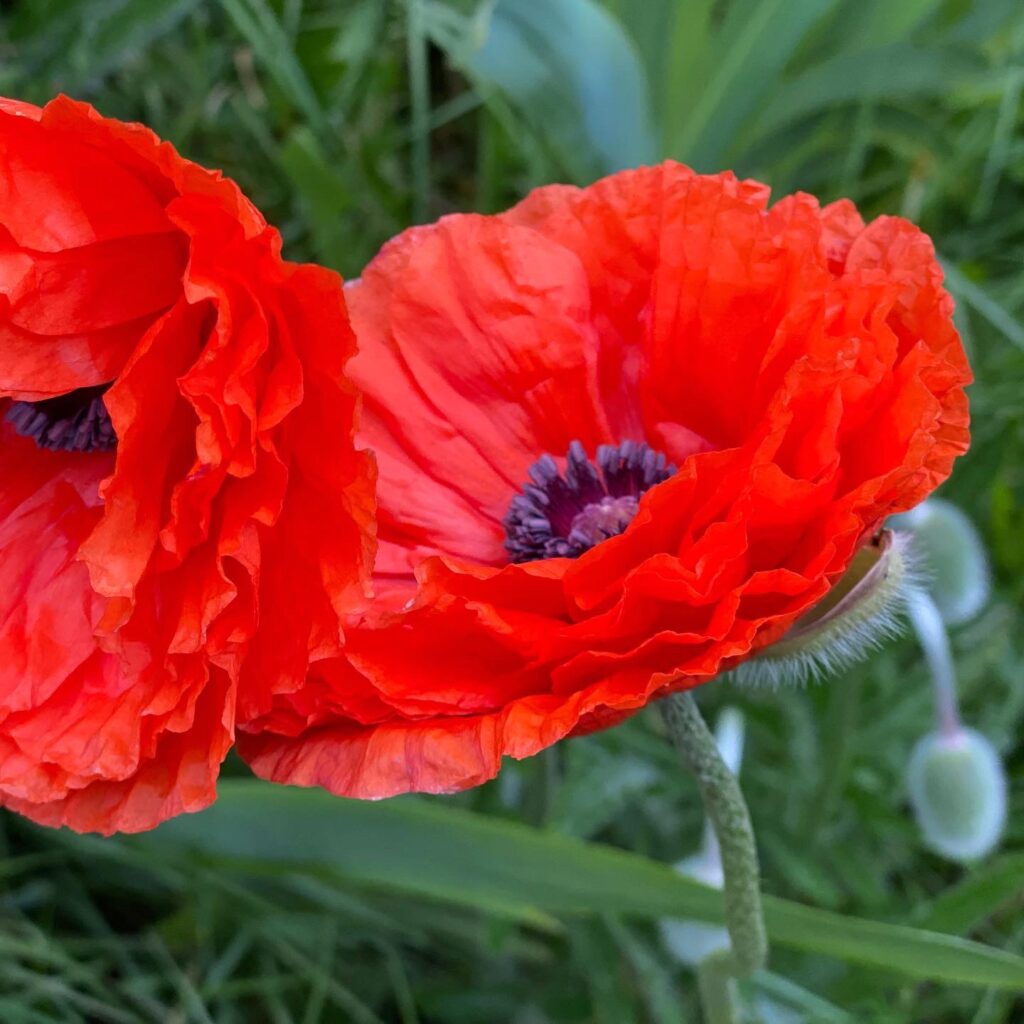
True progress and positive change is being made and I saw it first hand today! Thanks to all our volunteers and the clients and staff at Bridges to Pathways for a wonderful visit.


